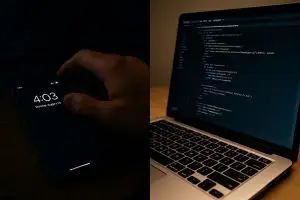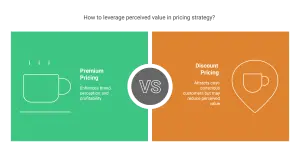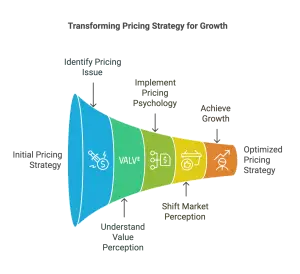What if your biggest product breakthrough came from a teenager eating chicken tenders at lunch?
Yesterday, my 14-year-old son Cole destroyed six months of development planning with a single sentence. And instead of being frustrated, I’m thrilled. Because that’s the raw power of building an app in public — the feedback that changes everything comes from the most unexpected places.
Most founders hide behind closed doors, perfecting their products in secret until the “big reveal.” But what if that secrecy is actually killing your startup? What if the key to creating something people actually want is letting them watch you fail, pivot, and rebuild in real-time?
I’m about to show you why building an app in public isn’t just a trend — it’s the future of mobile app development. And why listening to a teenager might be the smartest business decision you’ll ever make.
The Lunch Conversation That Changed Everything
Picture this: I’m sitting across from my son Cole, explaining The Routine — our baseball player development platform that I’ve been pouring my soul into. I’m expecting praise, maybe some excitement about the features I’ve built.
Instead, he drops this bomb:
“Dad, kids my age need something different. We need challenges, gamification, competition. And it has to be on mobile, not just a website.”
In that moment, my entire app development process shifted. Here’s what hit me like a fastball to the face:
The Two Truths Cole Revealed:
- Different ages need different experiences — an 8-year-old and a 14-year-old are living in completely different worlds
- Mobile-native isn’t optional — it’s the only way kids will actually use the product
That’s the beauty of building an app in public: you don’t get feedback from theoretical “users” in a focus group. You get brutal honesty from the people who will actually live inside your product. No filters. No politeness. Just truth.
This is startup transparency at its finest — and most painful.
From Devastating Feedback to Rapid Execution
Most founders would spend weeks processing this kind of pivot. Maybe form a committee. Run some surveys. Analyze the market.
Not when you’re building an app in public. You act immediately.
Today’s Mobile App Development Sprint:
- Bootstrapped the entire project in Expo — the foundation for going mobile-native
- Built out 8u-10u player-facing dashboards — age-specific experiences with unique gamification
- Launched the admin dashboard — giving coaches real-time control and insights
- Installed Xcode — preparing for iOS testing and deployment
- Mapped August 31 deliverables — public accountability with a hard deadline
It’s messy. It’s imperfect. And, yes, it’s slightly terrifying. And that’s exactly what the build in public movement should look like.
No hiding behind “stealth mode.” No pretending everything is perfect. Just raw, unfiltered app development process exposed for the world to see.
The Deeper Mission Behind Building an App in Public
Here’s something most startup founders won’t tell you: The best products come from personal pain.
I realized about a year ago that RBC (Regulators Baseball Club) desperately needed something like The Routine. But I was battling personal demons that pulled me away from the work. Depression. Doubt. The imposter syndrome that whispers you’re not technical enough to build something meaningful.
Now I’m free to focus again. And what matters most isn’t just creating better baseball players — it’s creating better humans.
The HEAT Philosophy We’re Embedding in Code:
- Hustle — Effort when no one’s watching
- Effort — Giving 100% regardless of the score
- Attitude — Choosing positivity in adversity
- Teamwork — Success through collaboration
Baseball shaped my life. It taught me discipline, resilience, and how to fail forward. This mobile app development project isn’t just about tracking stats — it’s about giving the next generation those same life-changing lessons, delivered through their phones instead of just on the field.
That’s why building an app in public matters. It’s not about the code. It’s about the community watching you build something meaningful.
The User Feedback Loop That Changes Everything
When you embrace startup transparency, something magical happens: Your users become your co-founders.
Cole isn’t just my son — he’s my target demographic incarnate. His feedback isn’t filtered through adult assumptions about what kids want. It’s pure, unvarnished truth from someone who lives in the world I’m trying to serve.
What Traditional Development Misses:
- Adult assumptions about kid behavior
- Desktop-first thinking in a mobile-first world
- Feature bloat instead of focused experience
- Delayed feedback that comes too late to matter
What Building an App in Public Delivers:
- Real-time course correction from actual users
- Emotional investment from your community
- Built-in beta testers who care about success
- Accountability that forces you to ship
The build in public movement isn’t just about transparency — it’s about shortening the distance between idea and impact.
The Uncomfortable Truth About Mobile App Development
Here’s what nobody tells you about transitioning from web to mobile: Everything you built might be wrong.
I had six weeks of beautiful web development. Clean code. Elegant dashboards. Features that made me proud. And Cole destroyed it all with one conversation.
But that’s the gift of building an app in public — you fail fast instead of failing big.
The Pivot Principles:
- Kill your darlings quickly — attachment to old code is startup suicide
- Listen to users, not investors — kids don’t care about your tech stack
- Ship embarrassing versions — perfect is the enemy of launched
- Document everything — your struggles inspire others
Most founders would hide this pivot, pretend it was always the plan. But startup transparency means showing the messy middle, the moments where everything changes, the brutal feedback that saves your company.
The Four Pillars of Building an App in Public
After months of living this journey, here’s the app development process framework that actually works:
1. Start Before You’re Ready
Don’t wait for the perfect tech stack, the ideal co-founder, or complete clarity. Just start. The path reveals itself through movement, not meditation.
2. Execute Relentlessly
Small steps compound into massive momentum. One line of code. One user conversation. One feature shipped. The build in public movement rewards consistency over perfection.
3. Fail Fast and Publicly
Every wrong turn is a shortcut to the right path — but only if you’re willing to admit it publicly. Your failures become someone else’s roadmap.
4. Pick Yourself Up Daily
Building an app in public means everyone sees your bad days too. The key isn’t avoiding them — it’s showing how you bounce back.
This framework isn’t just about mobile app development. It’s about building anything meaningful in an age where authenticity beats authority.
What’s Next: The Public Roadmap
No vague promises. No “coming soon” nonsense. Here’s exactly what I’m building over the next two weeks, and you can hold me accountable:
By August 31:
- Complete age-specific dashboards (8u, 10u, 12u, 14u versions)
- Launch mobile MVP on TestFlight for iOS
- Onboard 50 beta users from RBC families
- Share daily build logs showing wins and failures
- Document the user feedback loop in real-time
This is startup transparency without the safety net. If I fail, you’ll watch it happen. If I succeed, you’ll see exactly how.
Your Invitation to Build in Public
Maybe you’re sitting on an idea, paralyzed by perfectionism. Maybe you’ve been building in secret, terrified of judgment. Or, maybe you think you need permission to start.
Consider this your permission slip.
The build in public movement isn’t about having it all figured out. It’s about having the courage to figure it out where everyone can see. It’s about turning your users into partners, your failures into features, your journey into the product itself.
Cole was right — kids don’t want websites. They want experiences that meet them where they are. But I never would have known that hiding in a development cave.
Building an app in public forced that conversation. It created the feedback loop that will save our product. It turned a lunch conversation into a company-defining pivot.
The First Inning of Something Bigger
This isn’t just about The Routine. It’s about proving that startup transparency beats startup theater. That mobile app development in public creates better products than development in secret. That your users know more about what they want than you do.
The scoreboard so far:
- Web app assumptions: DESTROYED
- Mobile-first reality: EMBRACED
- Public accountability: ESTABLISHED
- Ego and perfectionism: ABANDONED
We’re only in the first inning of this build in public movement. But already, the game has completely changed.
Ready to start building an app in public? Follow the journey as I turn teenager feedback into product features, failures into lessons, and transparency into traction.
👉 Subscribe to TEALPRINTS for raw, unfiltered insights into the app development process, or watch me build The Routine in real-time — mistakes, pivots, and all.
Because the future isn’t built in secret. It’s built in public.






